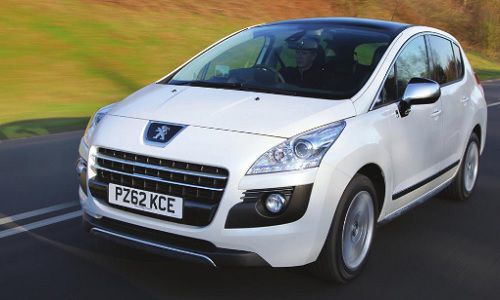The French, too, were revisiting the electric car after the Second World War. The Symetric (also known as the Arbel or Symmetric-Paris) was a relatively sophisticated four-wheel drive hybrid design, which harked back to the country’s glory days of the Krieger automobile. Lightweight, thanks to plastic bodywork, the car used a 4-cylinder gasoline engine to power four individual motors, rather like the Lohner–Porsche. It was unveiled at the Paris Motor Show in October 1953. Its futuristic lines and unusual powertrain prompted Time magazine to gush:
The most startling car on exhibit was a stubby, dome-shaped auto that runs on electricity. Built by two French brothers, Maurice and Casimir Loubiere, the Symetric-Paris has a 4-cylinder, 45bhp gasoline engine that turns a generator which, in turn, supplies current to four motors tiny enough to fit inside the wheels. If the cars were on sale to the public, the brothers estimate that the price might be about $1,000, but the French Ministry of National Defence has other plans. It is putting the car through exhaustive tests that may result in its being adopted as the French version of the Jeep.
The French men from the ministry must have known the Symetric didn’t have a hope of becoming a new Jeep, at least in its Paris Motor Show guise. Apart from four-wheel drive, the two vehicles could not have been more different. The Symetric, which had a strange curved glasshouse with a wraparound front windscreen and all-enclosed bodywork, would not have lasted five minutes on a battlefield. However, the car got its name due to the interchangeability of its bodywork. Rather like a Smart fortwo city car 50 years later, the plastic panels could be chopped and changed as required, so a Jeep clone was not as ridiculous as it first appeared. The suspension travel and chances of damaging a motor, not to mention the complexity of the drivetrain, were major stumbling blocks though, and nothing came of the trials.
Nevertheless, development continued throughout the 1950s, and by 1959 the brothers unveiled plans to ditch the gasoline engine altogether. Instead they dreamt up a gas generator: diesel-oil burners heated a series of metal elements at one end, which were cooled at the other. The temperature difference produced an electric current with which the brothers believed they could power the four motors.
Even more in the realms of the fantastic was their final stab at revolutionizing the car industry: the Genestatom, which obtained a virtually limitless supply of power from ‘atomic energy cartridges’ filled with nuclear waste. The car’s would-be creators admitted they had no way of getting the nuclear fuel without the authorization of the French Government. Undeterred, they drew up plans to produce a fleet of gas generator-powered electric taxis for Paris. Unsurprisingly, even the French Government stayed well clear of the whole dubious idea.
In Britain, the Royal Mail was re-examining its use of electric delivery vehicles, this time beyond the confines of railway stations and postal delivery offices. The Pedestrian-Controlled Electric Delivery Truck (PEDT) was supposed to reduce the average postie’s workload by carrying bulky items and parcels. Basically a box on four wheels propelled by a battery-powered motor, they were initially used for parcel deliveries but were later introduced on urban letter delivery routes, too. Introduced in 1954, the PEDTs were highly successful and were quickly adopted by dairies for early morning milk rounds. The Co-Op Dairy operated a substantial fleet from the 1950s and the last weren’t retired until the 1980s.

The PEDTs proved electric drive had its place, but a more determined attempt to recreate the electric vehicle’s halcyon days was taking place in America – one that would use both US and European know-how to create a genuine modern mass production automobile.